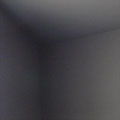
Martha Stewart Paint Review
I used Martha Stewart's new line of paint for The Home Depot this weekend to paint the bedroom. Since I…June 3, 2010
Book Storage in the Bedroom
I am working with American Express to redo my bedroom. This week they have provided me with 150,000 Membership Rewards…May 26, 2010
Possible Paint Colors for the Bedroom
I am working with American Express to redo my bedroom. This week they have provided me with 100,000 Membership Rewards…May 18, 2010
DIY Painting Tips, Tricks, and a Step-by-Step Guide
My dad was a handyman, and I grew up helping him. I've painted my home from top to bottom, as…March 9, 2010
Martha Stewart Paint Colors
I was informed today by Jules that the new line of Martha Stewart paint colors is now at The Home…March 3, 2010
Paint Colors
I've added a new section to the site where I'll list sources for various things used throughout my home. I've…November 9, 2009

Martha Stewart Paint Review
I used Martha Stewart’s new line of paint for The Home Depot this weekend to paint the bedroom. Since I shared a preview of the…

Book Storage in the Bedroom
I am working with American Express to redo my bedroom. This week they have provided me with 150,000 Membership Rewards points. The books in our…

Possible Paint Colors for the Bedroom
I am working with American Express to redo my bedroom. This week they have provided me with 100,000 Membership Rewards points. As I mentioned last…

DIY Painting Tips, Tricks, and a Step-by-Step Guide
My dad was a handyman, and I grew up helping him. I’ve painted my home from top to bottom, as well as the houses and…

Martha Stewart Paint Colors
I was informed today by Jules that the new line of Martha Stewart paint colors is now at The Home Depot. People, do you realize…

Paint Colors
I’ve added a new section to the site where I’ll list sources for various things used throughout my home. I’ve started with paint colors, and…
